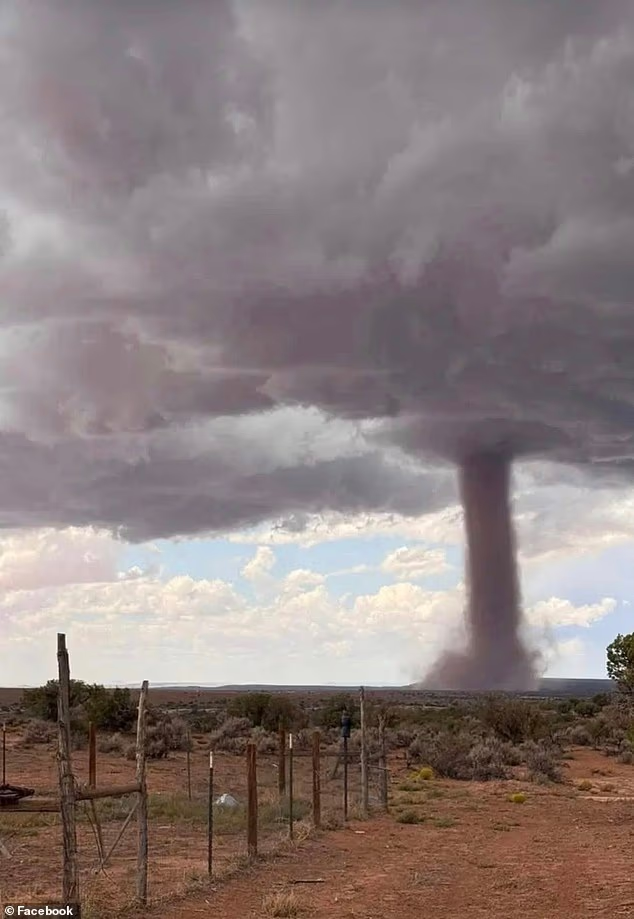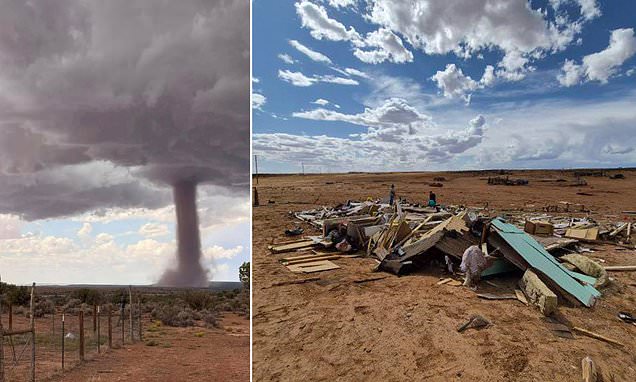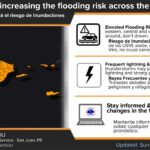SALT LAKE CITY — A rare and terrifying tornado was seen ripping through Utah‘s desert terrain on Saturday afternoon, destroying homes and prompting residents to flee.
The National Weather Service (NWS) office in Colorado issued a tornado warning at 12:46 p.m. MDT after confirming the twister was headed northeast.
‘A tornado is on the ground. Take cover now!’ the NWS warned.

The weather service urged locals to ‘move to a basement or an interior room on the lowest floor of a sturdy building.’
‘Avoid windows. If you are outdoors, in a mobile home, or in a vehicle, move to the closest substantial shelter and protect yourself from flying debris,’ the warning stated.
The tornado eventually touched down near Montezuma Creek – roughly 345 miles from Salt Lake City – where law enforcement reported seeing the dark, funnel-shaped cloud reach the ground.

The tornado warning remained in effect until 1:15 p.m. as the NWS claimed significant damage was to be expected.
‘Flying debris will be dangerous to those caught without shelter. Mobile homes will be damaged or destroyed. Damage to roofs, windows, and vehicles will occur. Tree damage is likely,’ the NWS stated.
Several homes were leveled as a result of the unexpected windstorm.
‘As of 4:31 p.m., it has been confirmed that several homes near Montezuma Creek were completely damaged after a tornado went through the community this afternoon,’ the Navajo Police Department reported.
No injuries were reported, however, officials urged the public to stay off roads and away from affected areas while emergency assessments and recovery efforts were ongoing.
Photos shared by Navajo Police showed the tornado tracking across the open desert terrain – a phenomenon that the state typically sees about three times per year.
Utah’s dry climate and rugged topography make it unfavorable for tornado development, according to Fox Weather.
The Beehive State’s tornadoes are ‘usually smaller in size, measuring no more than 60 feet wide (at the base), with a path length usually less than a mile and a life span of only a few seconds to a few minutes,’ according to NWS forecasters.
By DAILY MAIL



